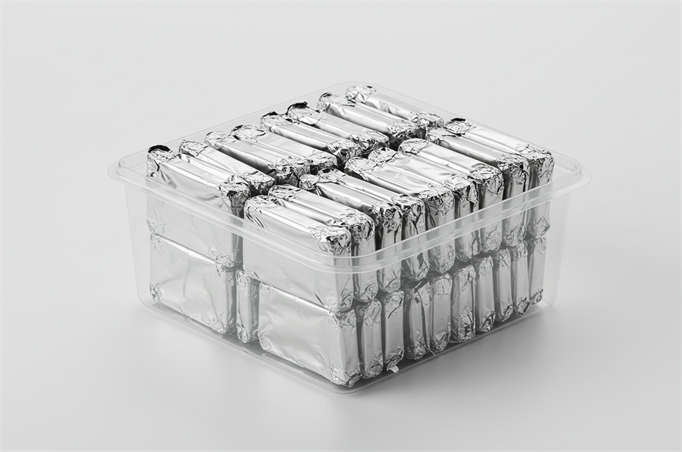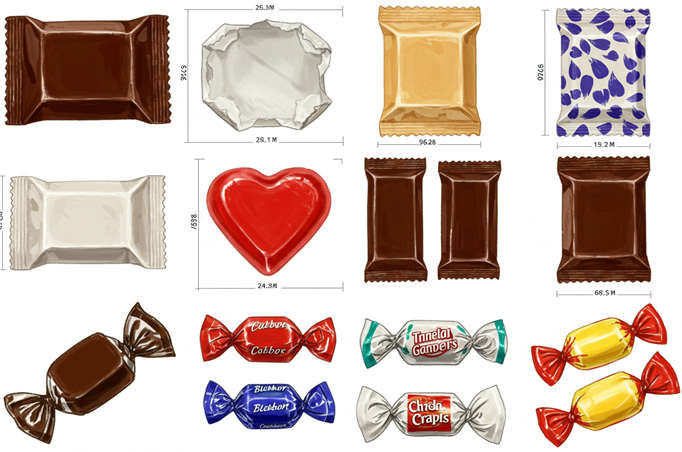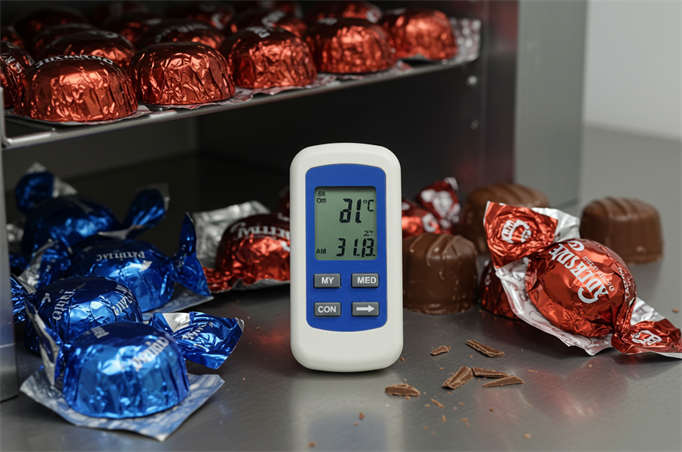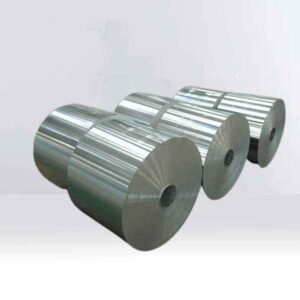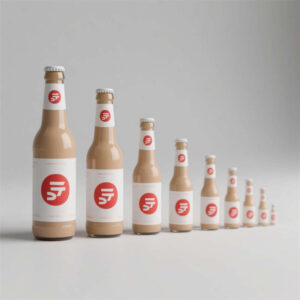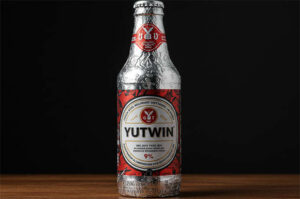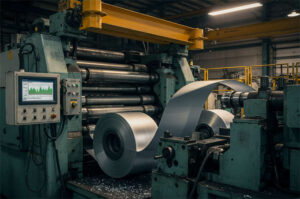When it comes to food packaging, safety and environmental impact are paramount concerns. Food-grade aluminum foil has emerged as a safer alternative to plastic packaging, offering superior protection for food products while being more environmentally friendly. This blog explores the safety advantages of food-grade aluminum foil over plastic packaging, examining its material properties, chemical stability, and environmental impact.
Food-grade aluminum foil offers significant advantages over plastic packaging regarding material properties, chemical stability, and environmental impact. It ensures better food safety while promoting sustainability and preserving food quality.
Aluminum Foil Acts as a “Protective Shield”
One of aluminum foil’s most significant advantages is its propriétés de haute barrière. It effectively blocks oxygen, moisture, light, and external vapors, keeping food fresh and protected. For example, nuts and meat, highly susceptible to oxidation and moisture, remain fresh much longer when stored in aluminum foil packaging. In contrast, plastic bags provide weaker protection, allowing oxygen and moisture to pass through, accelerating food spoilage.
Aluminum foil also remains chemically stable across different temperature conditions. Whether used for refrigeration or heating, it maintains its molecular integrity and does not release harmful substances. On the other hand, plastic may release plasticizers and other chemicals when exposed to high temperatures, especially when in contact with oily or acidic foods.
Aluminum Foil’s Chemical Stability Ensures Safety
Aluminum foil’s chemical inertness makes it a safer choice. Pure aluminum does not dissolve under normal conditions or react with food. Even when heated or freezing, it remains stable over extended periods. Le présent is crucial for food safety, ensuring no harmful substances migrate into the food.
However, quality matters. If aluminum foil contains impurities like lead or cadmium due to substandard manufacturing, these harmful elements could be released at high temperatures. Le présent is why choosing certified food-grade aluminum foil from reputable manufacturers is essential.
Even if plastic is labeled food-grade, it still poses risks. Under high temperatures or acidic conditions, certain plastics may release phthalates and other chemicals, which can be harmful if consumed over time.
Aluminum Foil’s Environmental Benefits Enhance Safety
Plastic pollution is a global issue. Traditional plastic packaging takes hundreds of years to decompose, and microplastics released in the process can eventually enter the food chain, posing long-term health risks.
Aluminum foil, however, is 100% recyclable. However, its production requires significant energy, et its high recyclability offsets this impact. Unlike plastic, which lingers in the environment as non-biodegradable waste, aluminum foil can be recycled infinitely without quality degradation.
By choosing aluminum foil, businesses and consumers support a more sustainable future and reduce the health risks associated with plastic pollution.
Aluminum Foil’s Versatility Makes It Superior
Aluminum foil serves multiple functions beyond packaging. It is also widely used in cooking. For example, when grilling, aluminum foil prevents food from direct exposure to flames while evenly distributing heat.
In contrast, plastic packaging has limited applications, particularly in high-temperature environments, where its safety concerns become more apparent.
Best Practices for Using Aluminum Foil
While aluminum foil is generally safer than plastic, proper usage is crucial:
- Avoid using aluminum foil for highly acidic or alkaline foods, which may cause minor reactions and lead to aluminum ion migration.
- Always choose certified food-grade aluminum foil from reputable manufacturers to minimize contamination risks.
By selecting high-quality aluminum foil and using it correctly, consumers can ensure food safety and environmental protection. Choosing aluminum foil is not just a health-conscious decision but also an eco-friendly one.
Which is More Eco-Friendly: Food-Grade Aluminum Foil or Plastic Packaging?
Both aluminum foil and plastic packaging have environmental pros and cons, depending on factors such as production methods, usage, and disposal.
Environmental Impact of Production
- Feuille d'aluminium: Manufacturing aluminum foil requires high energy consumption due to aluminum extraction and refining. However, aluminum is a renewable resource et 100% recyclable. The recycling process is straightforward and offers high recovery value.
- Plastic Packaging: Plastic production is generally more energy-efficient than aluminum, especially for biodegradable plastics. However, traditional plastics rely on non-renewable petroleum, and their production releases more pollutants into the environment.
Performance During Use
- Feuille d'aluminium: It offers excellent heat resistance and chemical stability, en veillant à ce que food safety while extending shelf life and reducing food waste.
- Plastic Packaging: Some plastics may release harmful chemicals when exposed to high temperatures or specific food types. However, food-grade plastics are relatively safe under normal conditions.
Disposal and Recycling
- Feuille d'aluminium is highly recyclable and can be reprocessed into new aluminum products without losing quality. Proper recycling significantly reduces the environmental footprint.
- Plastic Packaging: Traditional plastics do not decompose naturally and contribute to “white pollution.” Although biodegradable plastics exist, they require specific environmental conditions to break down. Plastic recycling rates remain low, leading to excessive landfill waste and environmental strain.
Which is the Better Choice?
- If recyclability et resource sustainability are priorities, aluminum foil is the better option.
- If energy efficiency during production is the primary concern, certain biodegradable plastics may be more environmentally friendly.
Recommendations
- Choose recyclable materials: Whether using aluminum foil or plastic, always opt for products with recycling labels and dispose of them properly.
- Reduce single-use packaging: Opt for reusable containers whenever possible.
- Support innovative packaging solutions: New biodegradable materials and eco-friendly packaging technologies constantly evolve, offering greener alternatives.
Understanding Polyurethane Foil Packaging
Polyurethane foil packaging utilizes polyurethane’s unique properties to enhance foil-based packaging.
Common Applications
Protective Cushioning in Storage and Transport
- In storage and shipping containers, polyurethane padding est utilisé to prevent aluminum foil rolls from damaging during transportation.
Coatings for Packaging
- Lubrizol’s Sancure™ 20898 polyurethane dispersion enhances hot stamping foil (HSF) et holographic packaging applications, improving strength and flexibility.
Use Cases in Food Packaging
Lamination for Composite Bags
- Polyurethane adhesives help bond aluminum foil with polyester, polypropylene, and other materials, forming durable, multi-layered packaging.
- It is common in coffee bags, where it enhances barrier properties et mechanical strength.
Food Pouch Manufacturing
- Polyurethane hot melt adhesives create high-sealability vacuum-sealed pouches, effectively extending shelf life.
Applications for Specific Foods
- Dry food packaging is ideal for snacks, soups, coffee, and pasta, providing superior moisture and oxidation resistance.
- Fresh food packaging is used for meat, cheese, and seafood, en veillant à ce que oxygen and moisture protection to extend freshness.
- Liquid food packaging: Used for juices and beverages, offering leak-proof and durable packaging.
Advantages of Polyurethane Foil Packaging
- Superior Protection: Resistant to heat, moisture, and oxygen, keeping food fresh.
- Eco-Friendly & Safe: Solvent-free polyurethane adhesives comply with FDA and EU food safety regulations.
- Customizable Solutions: Adaptable to various food packaging needs and meets different industry demands.
As food packaging continues to evolve, polyurethane foil solutions will ensure food safety, enhance sustainability, and improve packaging durability.
The Safety Edge of Food-Grade Aluminum Foil Over Plastic Packaging
Thanks to its remarkable safety profile, food-grade aluminum foil stands out as a safer packaging option than plastic. Its high barrier properties effectively block oxygen, moisture, and light, preserving food freshness and preventing contamination. Unlike plastic, which can release harmful chemicals when exposed to heat or certain foods, aluminum foil remains stable across various temperatures and does not leach toxic substances. Additionally, aluminum foil is fully recyclable and does not contribute to microplastic pollution, making it a more sustainable choice. As consumers become more conscious of packaging safety and environmental impact, food-grade aluminum foil presents a compelling solution for health-conscious and eco-aware individuals.




